Tofumeshi: A Taste of Tradition in Sasayama
Sep 27,2018
Tofumeshi: A Taste of Tradition in Sasayama
Sep 27,2018
In this irregular series, food culture researcher Kiyoshi Aya describes the local delicacies and ways of life she has encountered in different places throughout Japan.
Tofumeshi [literally tofu and rice] is a local delicacy eaten in the Oyama District of Sasayama, Hyogo. It is an irreplaceable dish that the people in the area always eat whenever gathering at an event, whether the occasion is happy or sad. In this article, Kiyoshi tells us the story of tofumeshi.

“Tofumeshi is a rice dish mixed with tofu and mackerel. To make it, deep-fried tofu, carrot, and burdock root are stir-fried in oil. Next, mackerel simmered in water and boiled momendofu [firm tofu] are mashed and added to the mix, all of which is fried a little longer. The combination is seasoned with soy sauce and mirin. To finish the dish, freshly cooked rice is mixed in with the other ingredients. The mackerel and momendofu make it a hearty and filling dish, and I suspect people in the past considered it a feast.”
Tofumeshi came about from community gatherings called ko. These gatherings used to take place at someone’s house. Which was stressful for the women of the house, as they had to prepare a massive meal for everyone.
“Naturally, when people from the community are gathering at your house, you want to treat them to a feast. The preparations for this, however, took an enormous amount of time and effort. An elder, who couldn’t bear to see the hardship, said, ‘Why don’t you just mix the rice with the side dishes to save time and energy?’ and that’s how the dish began. Since then, tofumeshi has become a staple in the area at weddings, funerals, sports festivals, and other ceremonies and gatherings.”
Tofu has long been considered a delicacy because of its nutritional value. But why was mackerel used in the mountainous region of Tamba-Sasayama? When asked, “It’s because, historically, salted mackerel was readily available in the area,” Kiyoshi replied.
“The so-called Saba Kaido [Mackerel Byways] are well known as routes along which mackerel and other fish were transported from Wakasa [present-day Fukui]. Wakasa Kaido, which ran from Obama on Wakasa Bay to Demachiyanagi in Kyoto, is likely the most famous. These routes also brought salted mackerel from Wakasa Bay to Sasayama, which is why salted mackerel was used in tofumeshi. Today, people use canned mackerel rather than salted mackerel because it’s easier, but the local dish has been passed on to the present day.”
Morimoto Yoshiko and other local women are working hard to continue the tradition of tofumeshi so it does not die out. They have been engaged in various activities to promote tofumeshi, one of which was opening Community Kitchen Yurari in the Oyama district more than a decade ago. It has become a popular place to eat both for locals and for sightseers visiting Sasayama.
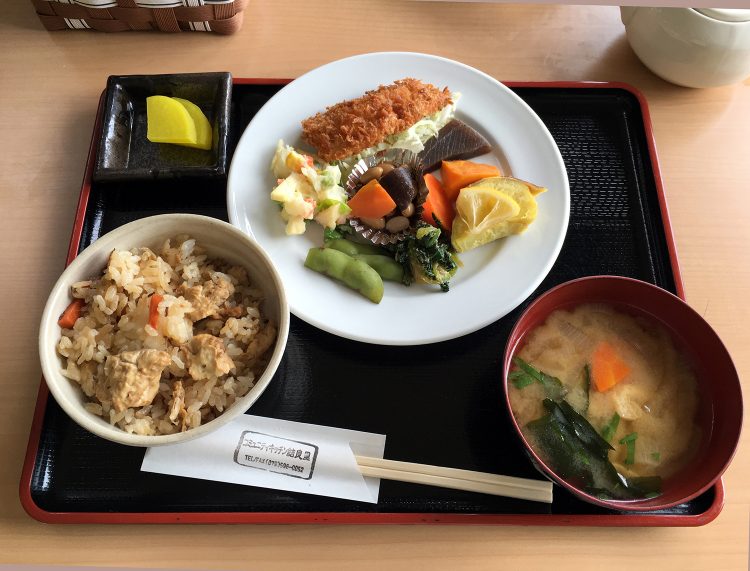
“If you visit Yurari during lunch time and order the Yurari course lunch, you can eat tofumeshi together with homemade seasonal dishes,” Morimoto said. “Try the tofumeshi plain to start, and then pour in some hot tea and mix in some wasabi for a refreshing and delicious taste.”
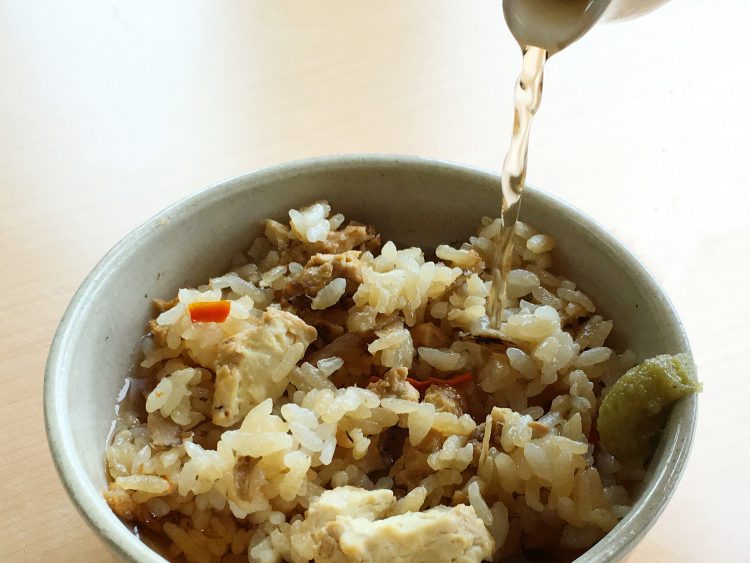
▲Have it plain first, and then pour in tea to enjoy two different delicious tastes.
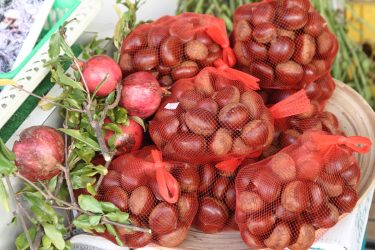
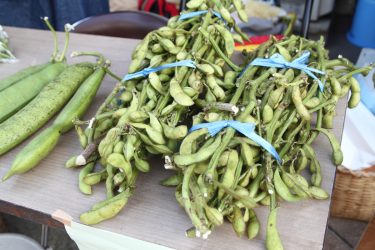
▲Seasonal ingredients such as boiled black edamame and chestnuts are available in the autumn in Sasayama. The Tamba-Sasayama Aji Festival held every October is packed with people looking for these Sasayama dishes. Yurari serves tofumeshi at the festival and sells 300 meals in three days.
Many of local foods disappear when the events and customs that inspired them disappear and the people who once knew them are no longer around. The reason why tofumeshi has been handed down in this area, where ko and other gatherings are no longer held in private homes, is due to the devotion of Morimoto and other local women.
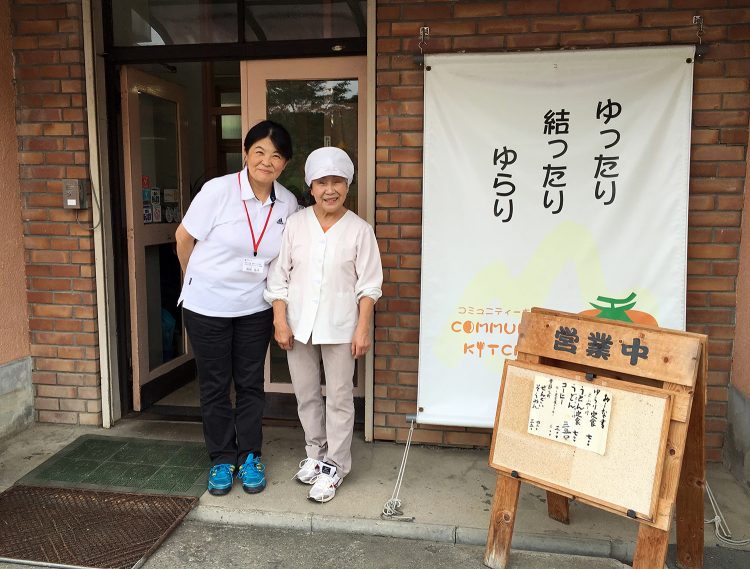
In Sasayama, you can purchase boxed tofumeshi meals at highway rest areas, and retort packets of tofumeshi made at Yurari are now sold as well. The retort packets are useful for local people as meals as well as for souvenirs, as all you have to do is mix in rice and they are ready to eat.
“I believe that they’ve been able to keep the tradition alive because of a singular focus to pass it on to future generations,” Kiyoshi concluded. “When I visited Yurari, they were making a big pot of tofumeshi, and I was struck by how energetic they were. ‘Tofumeshi is a local treasure,’ Morimoto said to me with a smile. Hearing those words, I could sense their longing to pass on tofumeshi to the next generation and the next through new connections.”

food culture researcher
food culture researcher
food culture researcher and Secretary of the Research Division at the National Council for Washoku Culture
Born in Osaka prefecture, Kiyoshi is involved in researching traditional regional Japanese cuisine and the dietary habits in fishing and farming communities as well as writing and giving lectures about local foods.
Recent publications include Washoku Techo [Washoku Handbook] (co-author, published by Shibunkaku), Furusato no Tabemono [Hometown Food] (Washoku Culture Booklet No. 8) (co-author, published by Shibunkaku), and Shoku no Chizu [Maps of Food], Third Edition (published by Teikoku-Shoin).